
Small excavators go big: Compact job sites force contractors to do more with less
By Nate Hendley
Construction Equipment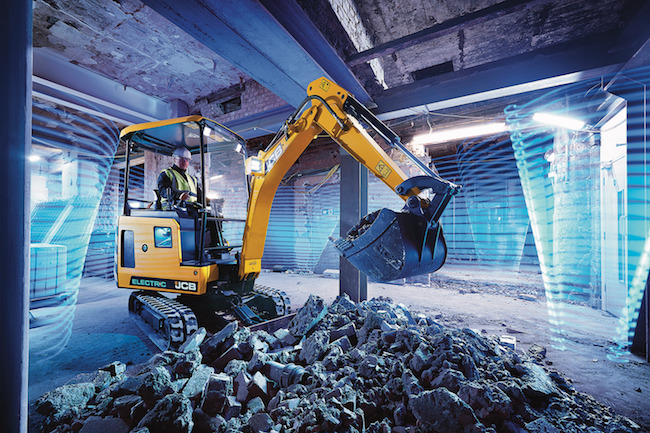
Small-sized excavators have hit the big time. And surging growth in the segment isn’t finished yet.
According to a research report released this March, the global market for mini-excavators accounted for US$7.2 billion in 2017, with construction making up the largest share. By 2025, the category is projected to be worth $9.8 billion, according to Allied Market Research.
Also called compact excavators, these machines are typically used on construction sites for materials handling, interior demolition work and digging basements, trenches and foundations, among a long list of other tasks. While the terms “compact” and “mini” are often used interchangeably, some industry standards do apply to the category in terms of weight. In general, “a mini-excavator is up to eight tons,” says Greg Worley, product application specialist at Caterpillar Inc.
The Allied Market Research report cites several reasons why such machines are surging in popularity, including advancements in technology that have led to higher power output and enhanced performance. Worley says housing trends are also driving mini-excavator sales.
“10 to 15 years ago, we would commonly build a house in a new sub-division on a one-acre plot. Then it went down to half an acre, then a third of an acre. Now we’re at a tenth of an acre or smaller, with just a small access in between properties,” Worley says.
Powerful but compact excavators are ideal for working on tiny residential lots, or in crowded urban environments where space is at a premium. And because they’re relatively light, mini-excavators are easier to transport than bulkier equipment.
As for trends within the compact segment, “We’re seeing more and more interest into either ultra-low emissions or no emission vehicles,” says Tom Connor, product specialist for excavators at Bobcat Co. This interest stems from the fact that people usually don’t like exhaust fumes, he adds.
Compared to diesel machines, electric and hybrid mini-excavators give off minimal or zero emissions and make little noise. They can work near schools, hospitals and residences, as well as at night, without incurring complaints about noise and fumes. No surprise then that OEMs have started embracing the electric/hybrid concept.
Safety is also top-of-mind among manufacturers, which are increasingly equipping excavators with features such as ROPS (rollover protective structures), FOPS (falling object protective structures), OPS (operator protective structures), OPG (operator protective guards) and TOPS (tip-over protective structures).
Zero tail swing remains another common option. This feature makes it less likely that operators will accidentally smack into walls or barriers, but the reduced stability does cause occasional concern for OEMs.
Zero tail swing “does seem to be popular and can be useful in applications with limited space,” says Lee Padgett, product manager at Takeuchi-US. “Conventional tail swing machines still provide a much more stable digging and lifting platform, however.”
Ease of use is another factor driving mini excavator sales. “A mini-excavator is a reasonably simple machine that just about anybody can get on and in a very short time, dig a hole or move dirt… This gives a lot more flexibility to a contractor,” Worley says. “[There’s] no more, ‘You can’t dig that hole because the backhoe operator is off sick.’”
With this in mind, here’s a look at what’s new or newly updated in the mini-excavators sector:
Bobcat
Bobcat launched its E10e electric mini-excavator at bauma earlier this year in Munich, Germany.
The company has described the new machine as the industry’s first commercially available, fully-electric, zero tail swing model in the one tonne class. The E10e uses a lithium-ion battery pack that can operate for an eight-hour shift (the operator can recharge the batteries during breaks). The E10e has a retractable undercarriage that reduces the width of the machine to 710 mm (2 feet, 4 inches).

The E10Ee, which is being launched first in Europe before its eventual introduction to North America, is a variation of Bobcat’s E10, a traditional diesel. The E10e has “basically the same machine capabilities” as its diesel predecessor, Connor says. Bobcat also recently refashioned its popular E26 compact excavator, which boasts a Tier 4 compliant engine, a new long arm configuration and minimal tail swing.
In addition to TOPS, Bobcat utilizes ROPS and FOPS safety features and offers a depth guidance system called Depth Check. “As the term implies, it’s a guidance system, not a control system,” Connor says. “If I wanted to dig to 40 inches, it will guide me to dig 40 inches deep.”
Bobcat also offers Machine IQ telematics which monitors and transmits performance data.
Caterpillar
Caterpillar recently introduced four new models in its Next Generation line of mini-excavators.
The 301.5 is a standard tail swing, entry-level machine with a canopy and a 1.5 ton weight. The 301.7 CR has a compact radius and comes in at 1.7 tons while the 301.8 is a standard tail machine weighing 1.8 tons. The 301.8 also comes with either a canopy or a cab, which can be air-conditioned. The 302 CR, meanwhile, has a compact radius, weighs two tons and comes with either a canopy or a cab.
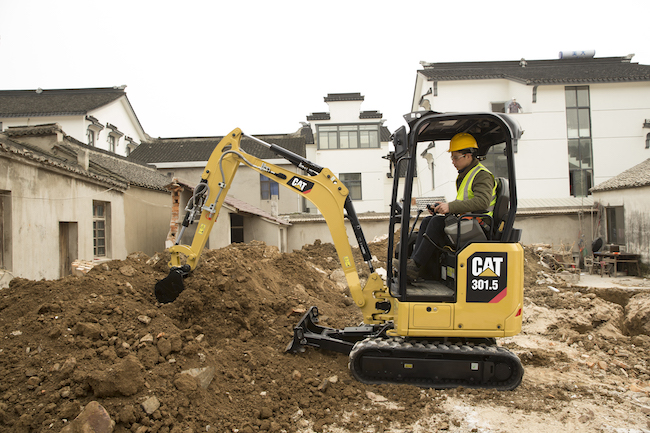
The four Next Generation models can achieve dig depths ranging around 2.4 metres (7 feet, 9 inches), while a long stick option can increase dig depths to 2.6 metres (8 feet, 5 inches). Rubber track undercarriages come as a standard feature (steel tracks are available too) and the four New Generation models use a Cat C1.1 three-cylinder diesel engine that meets Tier 4 Final/Stage V emissions requirements.
Worley describes the new models as “pretty powerful machines in a small package… because of their size and weight, they’re easy to transport… [Also] these machines can be lifted, craned onto buildings for internal demolition.”
Caterpillar also offers a ProductLink fleet management solution, a joystick steering system called Stick Steer and well as ROPS and TOPS protective features.
JCB
JCB recently released the 19C-1E, the industry’s first fully electric mini-excavator, the company claims.
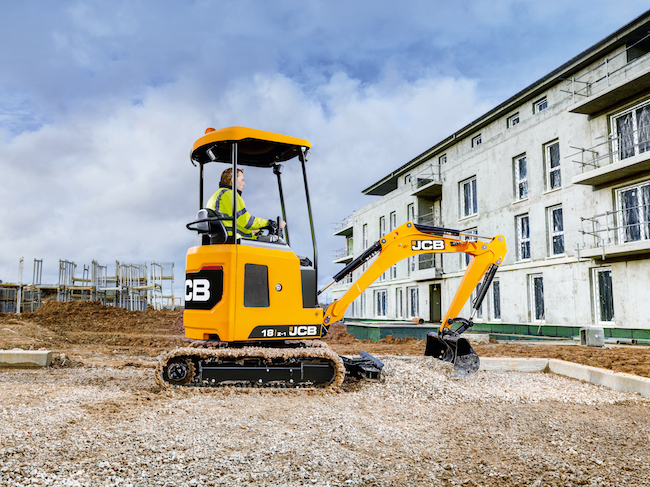
The 19C-1E has an operating weight of 1.9 tonnes, gives off zero emissions, can dig 2.8 meters (9 feet, 2 inches) and its three-battery pack offers enough juice for a full shift.
“The power is equal, if not more powerful than the diesel engine. It’s a game-changer,” says Wes Hester, sales manager for compact excavator at JCB North America. “This machine will go into more green environments and inner-cities, where noise pollution is a problem.”
The machine, slated to be released in North America in the fourth quarter of this year, has a ROPS and TOPS certified canopy and bodywork made of 100 per cent steel.
“In a congested area, you’re going to have damage. Our 100 percent steel body could protect the life of your machine,” Hester says. A safety feature known as the 2go system isolates hydraulic functions, preventing unintended movement. Using the 2go system, an operator can only start the machine in safe locked position, using two separate inputs.
The 18Z-1 zero tail swing model is another new compact excavator from JCB. It has an operating weight of 1.8 tonnes, can dig up to 2.6 meters (8 feet, 5 inches), has 100 per cent steel bodywork and 500 hour greasing intervals. JCB offers LiveLink telematics for remote monitoring.
“LiveLink gives diagnosis [and] health updates,” says Chris Lucas, mini-excavator product manager at JCB North America. “It lets the manager know if anything needs to be checked. We will contact the owner of the machine and say, you’re low on oil.”
John Deere
The 30G, released in 2017, is the most recent addition to John Deere’s G-Series of compact excavators. “The 30G was introduced to provide customers looking for a compact excavator with an option within the three to four metric ton class. It was redesigned to improve operator comfort and safety during use, as well,” says Jonathan Spendlove, product marketing manager for compact excavators at John Deere Construction & Forestry.
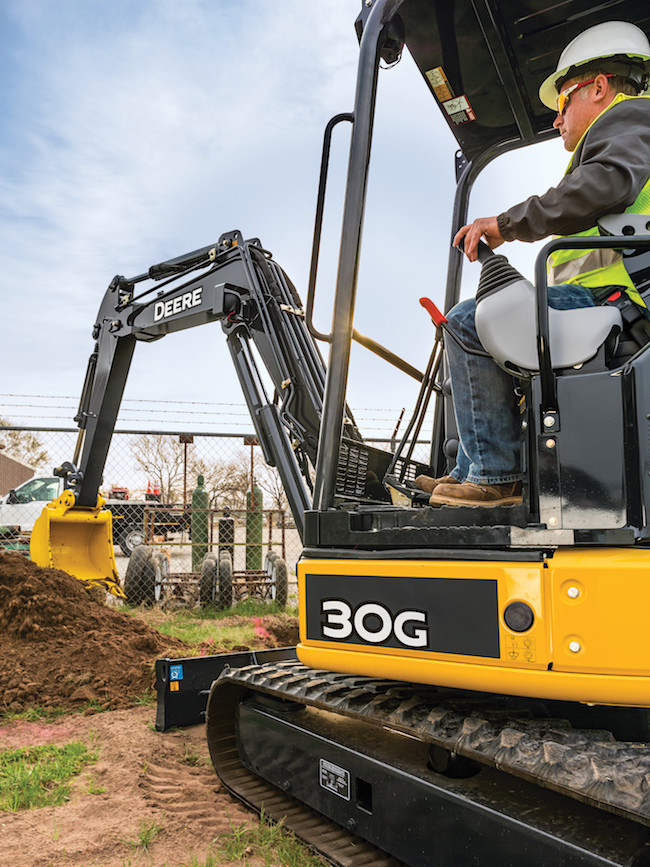
The 30G offers a maximum digging depth of 2.8 meters (9 feet, 2 inches) and a maximum digging reach of 4.9 meters (16 feet, 1 inch). “We are seeing that compact excavators with zero to minimal tail-swing are increasingly popular for operators,” Spendlove says. “With our reduced tail-swing design, John Deere compact excavators are made to be extra maneuverable in tight spaces.”
As for safety and operator comfort, “John Deere G-Series compact excavators offer operators unrestricted sightlines to maximize safety and precision,” Spendlove adds. “The G-Series’ operator stations include large entryways and are spacious, providing comfort and convenience during use. These compact excavators are also suitable to use during all four-seasons. The 26G and up have optional heated and air-conditioned cabs.”
Takeuchi
Takeuchi’s TB235-2 and TB250-2 compact excavators are designed to fill the 3.5 ton and 5-ton slots in its current lineup, according to Padgett. The TB235-2 has an EPA Final 4 engine, all-steel construction and a four-post canopy with ROPS, TOPS and OPG safety features.
The TB250-2 has an operating weight of around five tonnes, a maximum reach of over 6 metres (20 feet) and a dig depth of 3.8 metres (12 feet, 4.8 inches), plus a 39 horsepower Tier 4 final engine.
As all OEMs are well aware, government regulations regarding emissions keep getting stricter, Padgett notes.
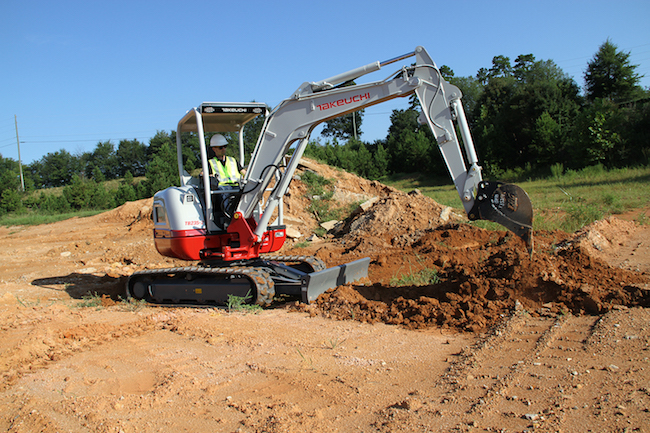
“Takeuchi has answered that call with our TB216H electric-hybrid machine… The TB216H features a 15 hp diesel engine that can be used to power the machine to and from the trailer and navigate to the job site,” he says. “Then [the operator] can switch to 100 per cent emissions free operation using an onboard 14.2 hp electric motor.”
For smaller jobs, Takeuchi’s TB216H has an operating weight of just under two tonnes and a maximum digging depth of 2.4 metres (7 feet 10 inches). It’s recommended for indoor demolition jobs and working around hospitals, schools and the like.
When it comes to telematics, “Takeuchi Fleet Management, or TFM, is standard equipment with two years of service provided on all new machines,” Padgett says. “TFM is designed to remotely connect users to their Takeuchi machines. TFM will provide alerts and machine information including location, performance and maintenance data giving insights into where and how the excavator is being utilized”
Nate Hendley is a freelance writer and author.
This article first appeared in the August 2019 issue of On-Site. Click here to read through the full issue.




